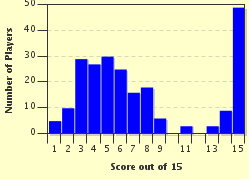Quiz Answer Key and Fun Facts
1. The best place to start is at the beginning. Where does the word "diaper" come from, anyway?
2. In 1947 a woman by the name of Marion Donovan invented one of the most significant precursors to the modern disposable diaper, although it would look quite simple and ineffective by today's standards. What did she name her product?
3. The next step was to come up with an absorbent material other than cloth - i.e. one that could be cheaply thrown away. What was the first truly disposable absorbent material used in diapers?
4. After Donovan, the next big name in diaper innovation is Vic Mills. Among his many diverse accomplishments, what did he do?
5. The early history of the disposable diaper is one of lots of trials and just about as many errors. They were leaky, had a small capacity, and did not fit very well. About when did people get the manufacturing process figured out to the point that they really started introducing products that would look familiar today?
6. Which of the following was NOT a brand of disposable diaper at some point?
7. When were Pampers introduced to the market?
8. When were Huggies introduced on the U.S. market?
9. The Unicharm corporation in Japan introduced a new innovation in disposable diapers in 1982, known as "SAP." What does SAP stand for?
10. In what year were Huggies Pull-Ups brand training pants introduced?
11. What new design feature, introduced in 1984 and abandoned in 1986, was expected to be a big success but turned out to be a complete failure?
12. Between 1990 and 1996 Pampers (as well as several other leading brands) included this design feature:
13. Which of the following countries did not have a mature market for disposable diapers by the end of the 20th century?
14. Disposable Diapers make up a lot of landfill waste. In 1978 an Oregon spot check indicated that between 16-32% of landfill waste is composed of disposable diapers. Subsequent comprehensive studies have yielded a lower percentage. Approximately what percentage of landfill space (in the U.S.) is filled by disposable diapers?
15. In 1981 and 1982, in response to concerns over the amount of solid waste generated by the use of disposable diapers, two companies attempted to market what they claimed were bio-degradable disposable diapers. Why did the Federal Trade Commission sue them?
Source: Author
Portobello
This quiz was reviewed by FunTrivia editor
Bruyere before going online.
Any errors found in FunTrivia content are routinely corrected through our feedback system.

